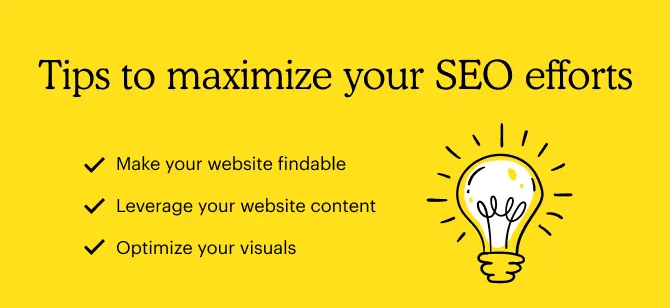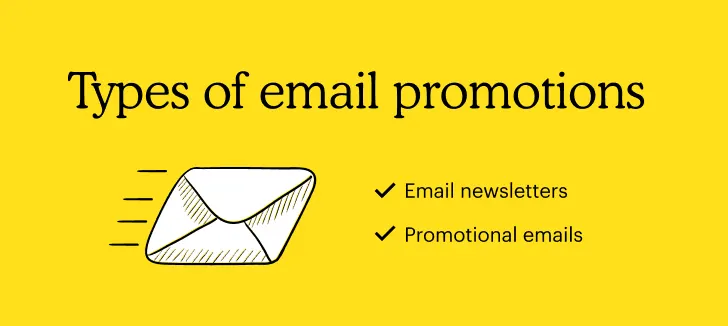In today’s world, creating a website is one of the most important steps toward small business success. It’s the foundation that allows you to build an online presence and grow your business.
After all, you can learn alot about the people who visit your website and turn them into an advocate, partner, or client with the right set of tools. If any of these things happen, it’s a win. Now, how do you get visitors to your website?
Try the following approaches to learn how to increase website traffic.
1. Optimize your content with keywords

When you optimize your content with keywords relevant to your business, the process is known as search engine optimization (SEO). Many business relationships are formed after someone types a word or phrase into a search engine to find a website. Knowing the search terms people use to discover your website makes it easier to draw in more visitors. Certain terms may be specific to you, such as a brand or product name. Or, they can be attributes or benefits like “all-natural,” “free delivery,” or something else that sets you apart.
In Google Analytics, you can view what terms your website visitors have used to find you in the past and use those keywords to help you optimize your website content. It's also a good idea to look at the terms your competition uses on their websites, in social media, or in emails.
Google Search Console is another free tool you can use to see how often your website appears in search results, which search terms drive the most visitors, and how many people click on your site in search results.
The tips below can help you maximize your SEO efforts:
- Make your website findable. Ensure your site has thorough descriptions of your offerings and their benefits so that search engines like Google and Bing can surface them. Also, create a descriptive SEO title for your website to allow more people to find you. An SEO title can be added as you build your website.
- Leverage your website content. Blog posts, articles, audience testimonials, and other content helps improve your search rankings and brings visitors to your website.
- Optimize your visuals. While search engines are much better at indexing words than visual elements, images and videos can help boost your Google ranking if they’re optimized for mobile devices. If you’re incorporating images to your website, make sure every image includes short alt text describing the picture or graphic to give the search engine a text alternative to interpret.
2. Use digital ads to promote your site
You’ve seen them all over the internet: ads promoting everything from online courses to sunglasses and much more. Those ads are called digital or banner ads, and they’re designed to drive traffic to a website or campaign-specific landing page. These types of ads work because they can be placed on websites or blogs that attract a specific audience, like home project DIYers or outdoor enthusiasts.
One of the best ways to attract interested users to your website is Google Search advertising, where you can attract users that are already searching to things related to your business.
On social media platforms like Facebook and Instagram, digital ads can be targeted to extremely specific groups and broken down by age, gender, interests, or education level. The data you have on the activity of visitors to your website—such as what pages or products they looked at and when—can help you easily build and manage ads to target people who are in-market for something you offer.
You may want to work with a consultant or an agency to develop a paid media strategy and determine where to place your ads and how long to run them. A professional in this field will also be able to provide insight into what kind of results to expect from a campaign and how to improve their performance over time.
3. Craft engaging, high-quality content
If you're wondering how to drive traffic to your website, one great way is to craft engaging, high-quality content that may answer a question or provide a solution to a specific problem. Doing so can help build your website's authority and position your business as an industry leader.
Creating unique, interesting, and helpful content can also help your SEO efforts. The more you optimize your content and site visits you get, the higher your site will rank on search engine results pages (SERP). Plus, posting informative content that's valuable can increase the likelihood of repeat visitors. This is because readers will know that your content is helpful and reliable.
When crafting content, make sure it's easy to read and follow. For example, a website subheading will help the reader find the information they are looking for quickly and easily.
4. Send emails that link to your website
A tried-and-true way to generate traffic is email. Email can be a powerful outreach tool to target and inform your audience and drive people to specific pages on your website.

There are 2 main types of email promotions:
- Email newsletters can feature useful information and promotions, like sales or events. They can guide audience members to your website to read an article or take advantage of an offer. While these might not bring you many new website visitors, they can be a powerful way to generate visits and sales from your best audience: those who already know you.
- Promotional emails can highlight specific sales or events. For example, you might promote a wine tasting or a trunk show in your store. Promotional emails can also help you showcase new products, services, or videos you’ve posted.
In both cases, you can segment your email audience based on data to send tailored versions of your newsletter or offer to the most receptive segments. When your target audience sees the value you can bring to their organization, you may wonder why you didn't implement an email campaign earlier.
“The most important thing in email is that you’re talking to people who want to hear from you,” says Sean Fletcher, Senior Product Marketing Manager at Mailchimp. “And you don’t have to blast the same thing to everyone because you have access to data that allows you to send targeted content that’s relevant to each person. Let’s say someone purchased shoes from you recently. You can create a segment based on their purchase history and send them email campaigns with your latest styles.”
5. Engage your audience on social media
You may be using social media to post some of the same kinds of content that you host on your website, such as articles, photos, or promotions. Did you know that in addition to amplifying your message, social media can drive website traffic? For example, if your website supports e-commerce, you can promote a sale on social media and drive traffic to it.
The key is selecting the social channel that works best for your message—and that you can manage effectively. This will vary depending on your business model and the audience you want to target.
For example, LinkedIn is a good choice if you want to promote a white paper or webinar to a professional audience, while Instagram lends itself more to visuals, like product imagery.
No matter where you post, make sure that you drive users to targeted pages, so there’s a clear connection between what they saw in the social post and the link they click on, notes Jon. “Your homepage is designed for a broad audience, so be specific with your landing pages.”
So if you don't know how to increase website traffic, consider increasing your social media presence.